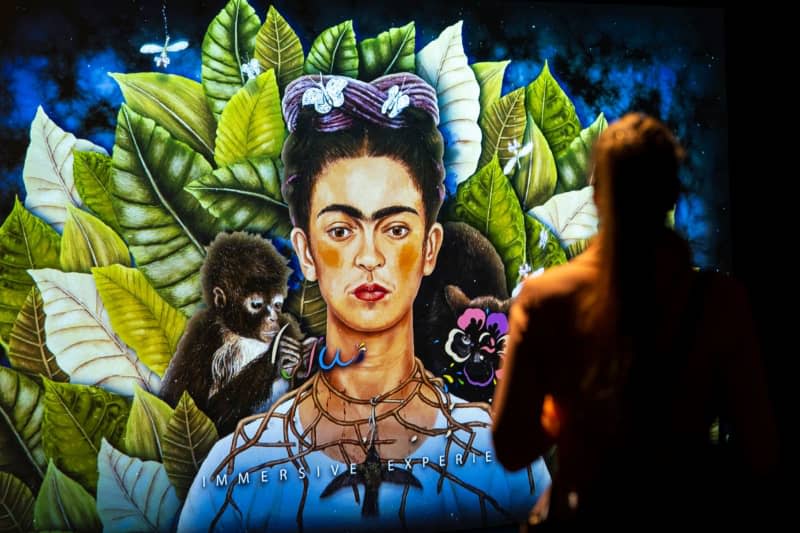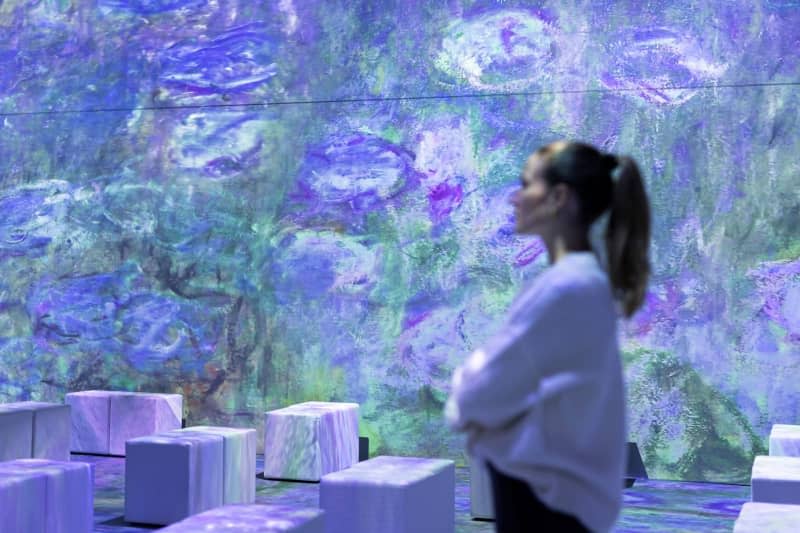Exploring immersive art: Bigger, brighter shows but are they better?

- Oops!Something went wrong.Please try again later.
- Oops!Something went wrong.Please try again later.
- Oops!Something went wrong.Please try again later.
Immersive art shows are all the rage, enveloping viewers in works displayed on an outsize scale and in a range of different media.
Often the shows involve digital displays, projecting works by Claude Monet or Salvador Dalí onto the walls of huge exhibition halls, so viewers feel like they are in the painting itself.
That saturates viewers in colours and shapes as they explore the elaborate shows that are often accompanied by music. Sometimes, the artists' biographies are told on film, too.
Organizers say visitors can surrender themselves to the intoxicating power of the images - in shows that are somewhere between entertainment and a whole new approach to art.
Often, the shows are created by private groups, leaving critics wondering whether they are competing with conventional museums or drawing more people to art.
An Australian show about Leonardo da Vinci, in Melbourne's Lume, says it was created "not only for viewing art but for experiencing it."
The show features original pages from his notebooks, plus machine inventions brought to life from his sketches, a 360-degree replica of the Mona Lisa and the chance to walk through installations of Florence and Milan at the time.
Another of the largest shows worldwide is in South Korea, with Gustav Klimt works shown at the vast Théâtre des Lumières, a "symbol of the Korean performance domain" the organizers say.
The space hosts three rotating exhibitions, "Gustav Klimt, Gold in Motion," "Gaudi, The Architect of the Imaginary," and "Uncanny Nature." Viewers can stroll through the works become active participants rather than passive views, the organizers say.
Germany too is hosting interactive experiences, with Dortmund's Phoenix des Lumières drawing more than 530,000 visitors in its first year. It's also showing works by Salvador Dalí and Antoni Gaudí, brought by French company Culturespaces, which creates digital art centres worldwide , including in South Korea.
"We always try to combine the experience of art and music with historical architecture," says Phoenix des Lumières director Renaud Derbin. The show is in Dortmund's 5,600-square metre gas blower hall of the former blast furnace plant.
In Amsterdam, they transformed an old factory, while in Bordeaux, they used a former World War II submarine base.
The Port des Lumières in Hamburg's Hafencity is preparing to open, with an illuminated harbour that has a slightly different atmosphere to the industrial heritage sites, says Derbin.
"People in the art world have always been sceptical towards us," he says, but notes that the Phoenix des Lumières is already one of the most visited cultural sites in Dortmund. "We also collaborate with traditional museums and are seen as a complement rather than a competitor," Derbin says.
Some have doubts about what they see as a spectacle. "It certainly depends on how these shows are organized," says Reinhard Spieler, board member of the German Museums Association. "Of course, they can be didactically well prepared and ultimately encourage people to visit the museum."
Most of the shows so far are designed more for overwhelming and bombastic effects than for education and mediation, Spieler says. He directs Hanover's Sprengel Museum and says these shows remind him of the 3D cinemas you used to see at fairgrounds or amusement parks.
Such immersive exhibitions work best in large halls with high ceilings. The ceilings need to be at least 6.50 metres high, otherwise it will look crowded, says Nepomuk Schessl, producer of Monet's Garden, now in Hanover, Frankfurt, Munich and Stockholm.
Some 1 million people have already immersed themselves in Monet's Garden, he says. Visitors can take a selfie in a Monet painting, draw their own water lilies or cross the bridge into the garden of the painter. The flowers are made of plastic, but the area still smells of roses.
Schessl is managing director of the Munich-based Alegria Exhibition that is putting on similar shows, "Viva Frida Kahlo" in Berlin and "Tutankhamun" in Vienna, Hamburg and Stuttgart, about the Mexican painter and the Egyptian pharaoh.
Monet lends itself particularly well to an immersive exhibition because he detached himself from the object and kept his paintings diffuse, says Schessel. In his view, paintings by Pablo Picasso would not work as well for an immersive art show.
For the first time, ‘Monet's Garden’ is making a guest appearance in a tent on Schützenplatz in Hanover. In this way, the show's producers want to bring the digital shows as travelling exhibitions to cities without a suitable location. The tent show is also heading to Dresden and Freiburg.
One part of the appeal are buildings with their own special atmosphere, such as a former Wall Street bank in New York or a turn of the century market hall from Vienna in 1900, says Schessl.
Often, viewers pay around twice as much to enter an immersive exhibitions than they would a state institution. "However, we finance ourselves and don't have the subsidies of some 50% to 80% like public museums," Schessel says.
He views immersive exhibitions as a "completely new genre" that has yet to reach its full potential - with the settings also possible for other kinds of cultural history, not just painting.
Video projections cannot replace originals, Schessl adds. "We appeal to a broad audience and get people excited about a particular artist, about their painting, about the culture."
After they have achieved that, he says, "the person should go to the nearest museum that has an original Claude Monet and immerse themselves in its magic."


